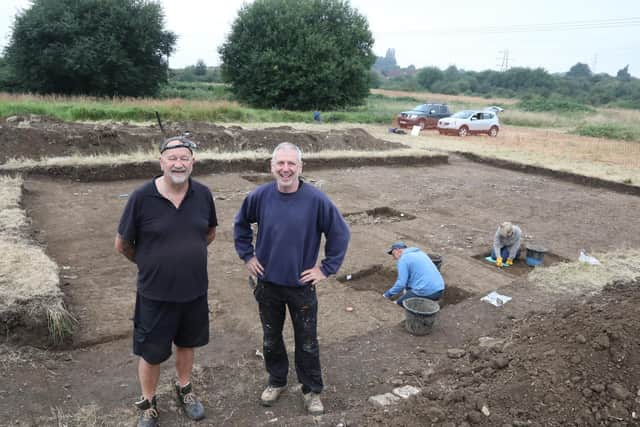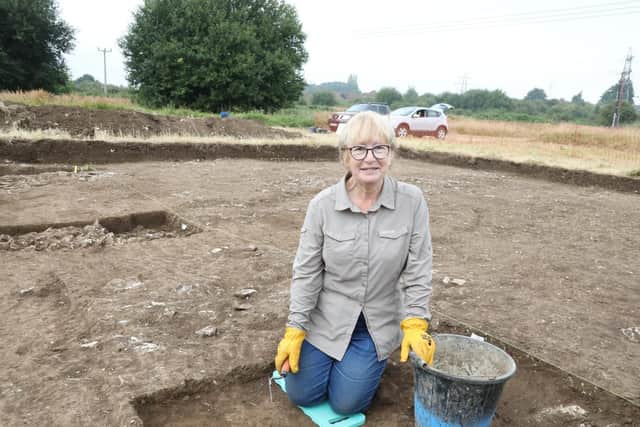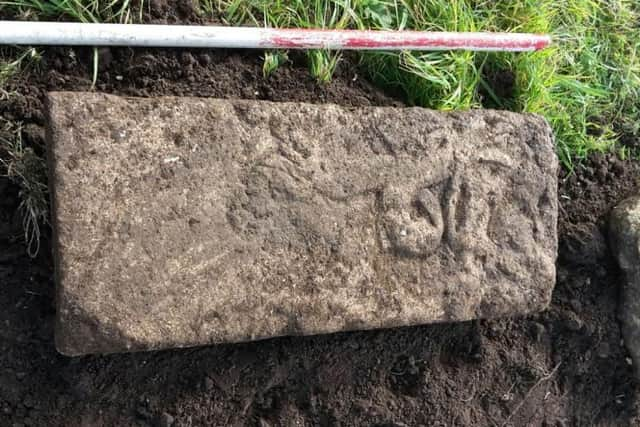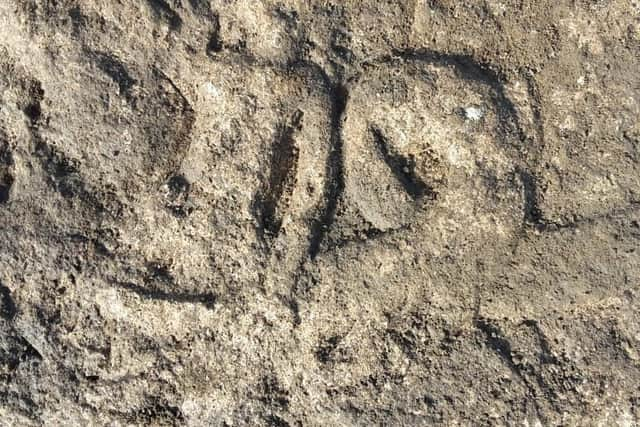Irthlingborough dig seeks to unearth history of Roman settlement
and live on Freeview channel 276
A hidden ancient settlement has been revealed by an archaeological dig near Irthlingborough this week - with more treasures and artefacts waiting to be unearthed at the Nene Valley site.
The long-awaited archaeological investigation on land now owned by the Wildlife Trust - previously farmland - was notorious locally for the pottery pieces that would be ploughed up.
Advertisement
Hide AdAdvertisement
Hide AdHearing the stories of finds, resident John Gray decided to start a community group to investigate the remains on the lower slopes of the valley close to Tannery Cottages - with initial digs finding a stone carving, coins and an enclosure.


Members of the Irthlingborough Archaeological Society (IAS) and volunteers led by Oundle archaeologist Derek Roberts are now scraping the remains, layer by layer, in an attempt to find evidence of the lives of the inhabitants.
Mr Gray said: "When I come down here, I disappear back to the Roman times. You are communing with these people. I get great mental relief from this place - it's like time travel. Every time I come here I feel relaxed."
The whole site has been extensively searched using a professional metal detectorist to find coins and other valuables. The finds are being catalogued under the watchful eye of Mr Roberts who was brought in as a consultant by IAS.
Advertisement
Hide AdAdvertisement
Hide AdHe said: "Anywhere you spit in Northamptonshire you are going to hit a Roman site. It's finding that one thing that gives us the everyday lives of the people who lived here. The guys and girls who get up, feed the family and go out and do a day's work."


The site has Iron Age pottery as well as Roman and subsequent Saxon evidence. Trenches have been made across the land that was surveyed by ground penetrating geophysical techniques, showing the stone structures and ditches.
It is thought the settlement once sat near a road that passed from the Roman town at Chester House Farm - a possible early form of service station for travellers with their horses seeking rest and food for themselves and their horses.
Volunteer Jo Wilson has been painstakingly excavating a trench.
Advertisement
Hide AdAdvertisement
Hide AdShe said: "For me it's fascinating. I don't mind what I find - it could be pottery - it's all so exciting, it's absolutely brilliant.


"Because of the proximity of the brook I don't think we'll find a bath house, maybe we'll find a temple. Anything could be here."
Working in the trench has been another Irthlingborough resident, William Huckle. His interest in archaeology was first piqued when as a 12-year-old school boy he discovered a pair of Saxon shoes in a nearby gravel pit - now exhibited in Northampton Museum.
He said: "For me it's not the actual finds, it's finding how people lived. We found some pottery and it had crushed shells in the clay. They must have collected the shells from the river and used them - that's amazing."
Advertisement
Hide AdAdvertisement
Hide AdThe site will be open to visitors for an open day on Saturday (September 11) between 10am to 3pm and Mr Gray wants local people to get involved.


He said: "It's for local people and getting people involved. We've had to beg, steal and borrow to get this going. We have had sponsorship from so many people. I'd like to thank Tom Banks for stepping in to help us and Western Power and the Wildlife Trust."
At the end of the five-year project it is hoped that the site will be self-sustaining and maybe become a permanent attraction depending on the significance of the finds.
The discovery of a stone carved panel could indicate the presence of a Roman temple, or just a stonemason's yard.
Advertisement
Hide AdAdvertisement
Hide AdMr Roberts added: "It's a 'what if'. What if the carving is from a shrine or a temple? There have been bucket loads of coins found here so it could be a roadside shrine where people stayed overnight. - It's that 'what if' - where is the road? Was it a trading route? Was it an industrial site? We want to find out."
For more information on the Irthlingborough Archaeological Society click here or go to the society's Facebook group by clicking here.The dig is off Tannery Cottages with access close to the electricity sub station at the bottom of the hill. Use postcode NN9 5QU.